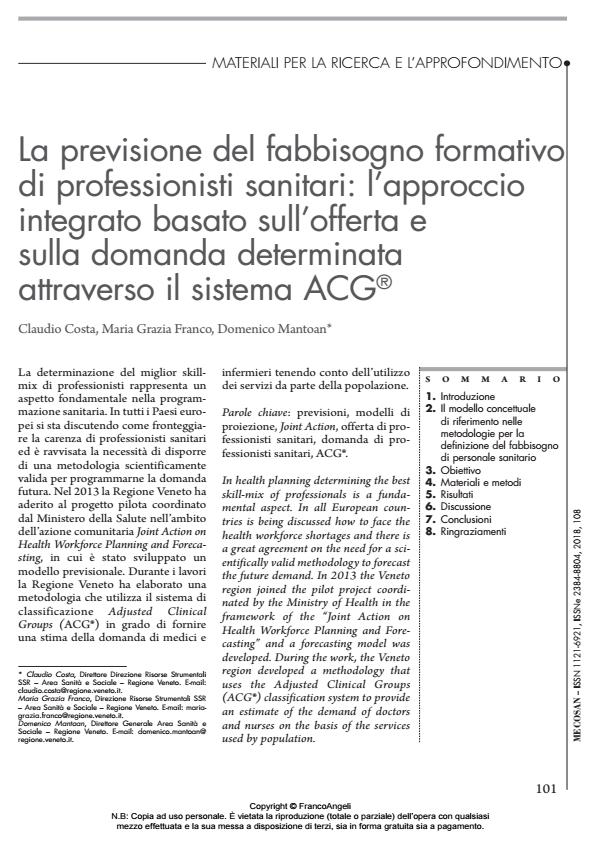La previsione del fabbisogno formativo di professionisti sanitari: l’approccio integrato basato sull’offerta e sulla domanda determinata attraverso il sistema ACG
Journal title MECOSAN
Author/s Claudio Costa, Maria Grazia Franco, Domenico Mantoan
Publishing Year 2019 Issue 2018/108
Language Italian Pages 21 P. 101-121 File size 704 KB
DOI 10.3280/MESA2018-108006
DOI is like a bar code for intellectual property: to have more infomation
click here
Below, you can see the article first page
If you want to buy this article in PDF format, you can do it, following the instructions to buy download credits

FrancoAngeli is member of Publishers International Linking Association, Inc (PILA), a not-for-profit association which run the CrossRef service enabling links to and from online scholarly content.
In health planning determining the best skill-mix of professionals is a fundamental aspect. In all European countries is being discussed how to face the health workforce shortages and there is a great agreement on the need for a scientifically valid methodology to forecast the future demand. In 2013 the Veneto region joined the pilot project coordinated by the Ministry of Health in the framework of the "Joint Action on Health Workforce Planning and Forecasting" and a forecasting model was developed. During the work, the Veneto region developed a methodology that uses the Adjusted Clinical Groups (ACG®) classification system to provide an estimate of the demand of doctors and nurses on the basis of the services used by population.
Keywords: Forecasting, projection model, Joint Action, health workforce supply, health workforce demand, ACG®.
- Metodologie per la determinazione del fabbisogno di personale nel management della sanità: una revisione della letteratura internazionale Luca Pirrotta, Alessandra Da Ros, Paola Cantarelli, Nicola Bellé, in MECOSAN 126/2024 pp.123
DOI: 10.3280/mesa2023-126oa17289
Claudio Costa, Maria Grazia Franco, Domenico Mantoan, La previsione del fabbisogno formativo di professionisti sanitari: l’approccio integrato basato sull’offerta e sulla domanda determinata attraverso il sistema ACG in "MECOSAN" 108/2018, pp 101-121, DOI: 10.3280/MESA2018-108006